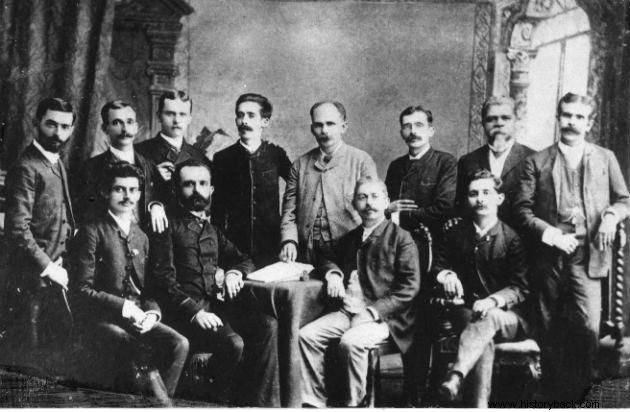The abolition of slavery in Brazil took place on May 13, 1888 , through the Golden Law , signed by Princess Isabel. This law freed slaves in Brazil after nearly 400 years of slavery.
Historical Context
The period that became known as Colonial Brazil (1530-1815) was marked by the Portuguese presence in the country, which used slave labor to carry out work in the colony.
In the beginning, pau-brasil was the great source of wealth for the metropolis, which exported the wood found in large areas throughout Brazil. This period became known as the pau-brasil cycle.

Therefore, sugarcane was the main product to be traded and, later, gold and coffee. These economic cycles were called respectively the Sugarcane Cycle, Gold Cycle and Coffee Cycle.
In this context, many black Africans were transported in the holds of slave ships. They came to work in the fields of Portuguese America and became the only source of income for the African regions of Portuguese occupation.
Thus, there were almost 400 years of slave labor in Brazil, which had a strong impact on the country's politics and economy, when Princess Isabel signed the Lei Áurea.
See also:Slavery in BrazilAbolitionist Laws
The abolition of Brazil took place gradually and controlled by the government. After all, the elites were afraid of a rebellion like the one that generated Haiti's Independence or a Civil War, as in the United States.
Since the arrival of the Portuguese court to its Portuguese colony, Dom João had to accept several treaties, imposed by England, that compromised the freeing of slaves.
In 1831, for example, during the regency period, it was declared that every enslaved person who arrived in Brazil would be considered free.
Later, with the consolidation of the Second Reign, a series of laws were passed to end slave labor slowly.
They are:
- Eusébio de Queirós Law (1850), prohibited the slave trade from Africa to Brazil;
- Law of the Free Womb (1871), established freedom for the children of slaves who were born after that date;
- Law of Sexagenarians or Saraiva-Cotegipe Law (1885), benefited black people over 60 years old.
The process of freeing the slaves was not simple, as the large slave owners and landowners wanted to be compensated.
For their part, the captives themselves organized and saved to pay for their manumission, for example. Escapes, riots and riots were also common.
These laws also gave the slave the possibility of requesting his freedom in court if his master transferred him improperly or if he proved that he had arrived in the country after 1831.
The Lei Áurea solved the problem of slavery, but not the social inclusion of blacks in society. Farmers also preferred to use the labor that was increasingly arriving from Europe in a clear racist stance.
Since then, Afro-descendants have suffered as a problem of social inclusion in the country.
See also:Golden LawAbolitionist Movement

Abolitionism was a political and social movement of the second half of the 19th century, which brought together politicians, literati, religious, slaves and the population interested in ending the slave trade and labor in Brazil.
The names that stood out in the Brazilian abolitionist movement were:André Rebouças, Joaquim Nabuco, José do Patrocínio, Castro Alves, José Bonifácio, o Moço, Eusébio de Queirós, Luís Gama, Visconde de Rio Branco and Rui Barbosa.
Princess Isabel
Princess Isabel (1846-1921), daughter of D. Pedro II, was the first woman to administer the country, being therefore an important figure not only in the quest for the liberation of slaves, but also for the rights of women.
The princess had already signed the Lei do Ventre Livre when she first exercised the regency in Brazil. She was also a well-known admirer of the abolitionist cause.
In this way, she represented a female icon of great importance in the history of the country.
Zumbi dos Palmares
During colonial times and during the Empire, runaway slaves gathered in groups called quilombos.
One of the most outstanding during the colonial period was the one led by Zumbi dos Palmares, in Alagoas, called Quilombo dos Palmares.
Zumbi, who was born free, resisted the onslaught of the Portuguese, but was defeated and beheaded on November 20, 1695.
Over time, his example made him a symbol for the black movement in the 20th century.
The “Day of Black Consciousness” is celebrated on November 20, in honor of Zumbi dos Palmares.
Read more :
- Black Consciousness
- Black Movement
- Quilombo dos Palmares
